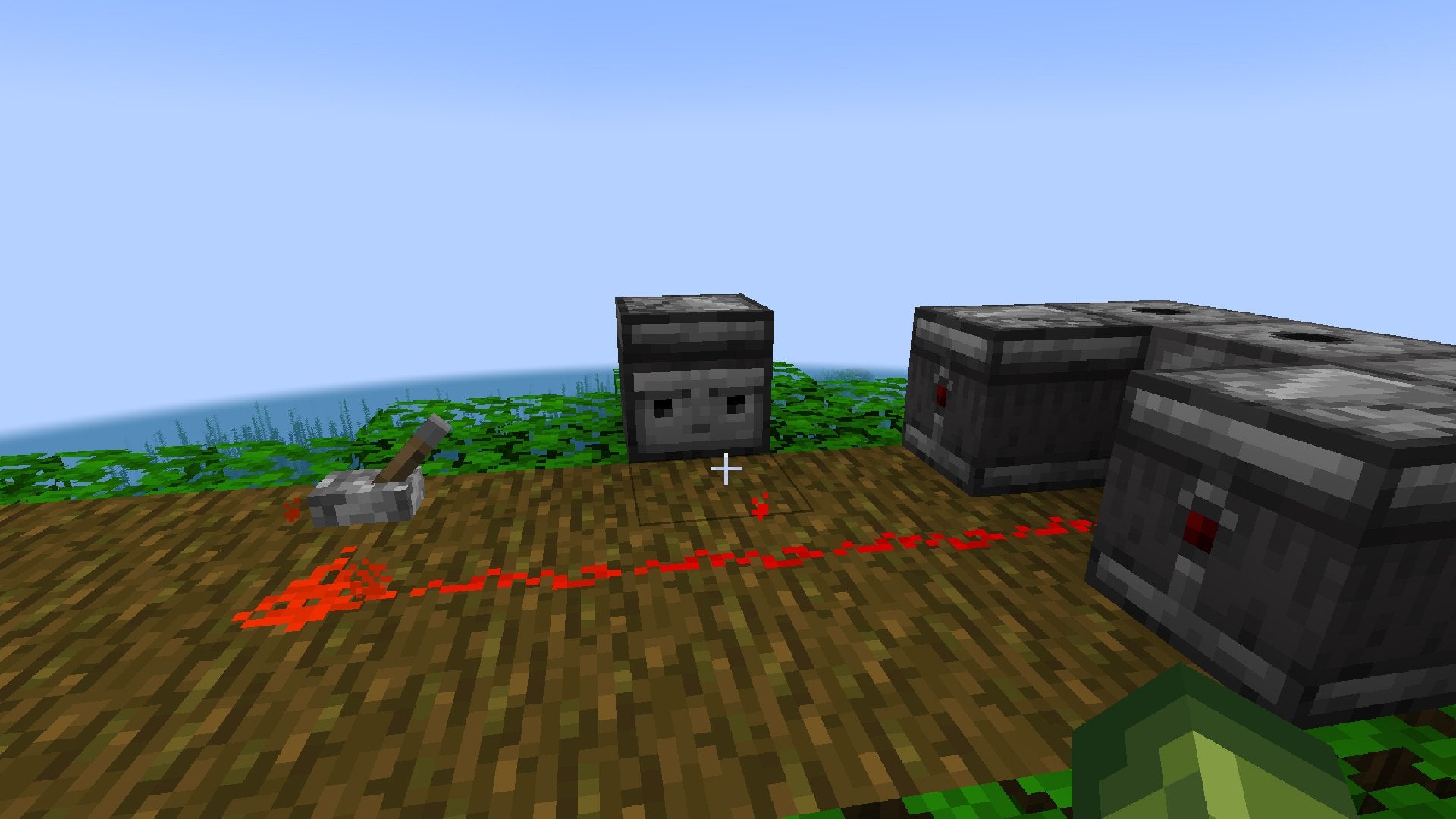![]() Key Takeaway
Key Takeaway
To craft an Observer in Minecraft, you need six Cobblestone, two Restone Dust, and one Nether Quartz.
When you place an Observer, it always faces away from you—in any of the six main directions.
Press an Observer’s face side directly against something you want to track and take note of whether or not the red light on the back side of the Observer lights up.
There are tons of blocks in Minecraft that interact with Redstone signals—the Observer is one that lets you track changes in its surroundings while creating a Redstone Pulse as it does so. However, before you can use it to create cool machines, you’ll need one special ingredient.
Table Of Contents
What You Need to Craft an Observer in Minecraft
To craft an Observer in Minecraft, you’ll need six Cobblestone, two Redstone Dust, and one Nether Quartz. On a Crafting Table, place your six Cobblestone blocks in the top and bottom rows. Next, put the two pieces of Redstone Dust in the middle row anywhere you want as long as they are touching. Lastly, place the Nether Quartz in either the middle-left or middle-right slot. This crafting recipe gives you one Observer.
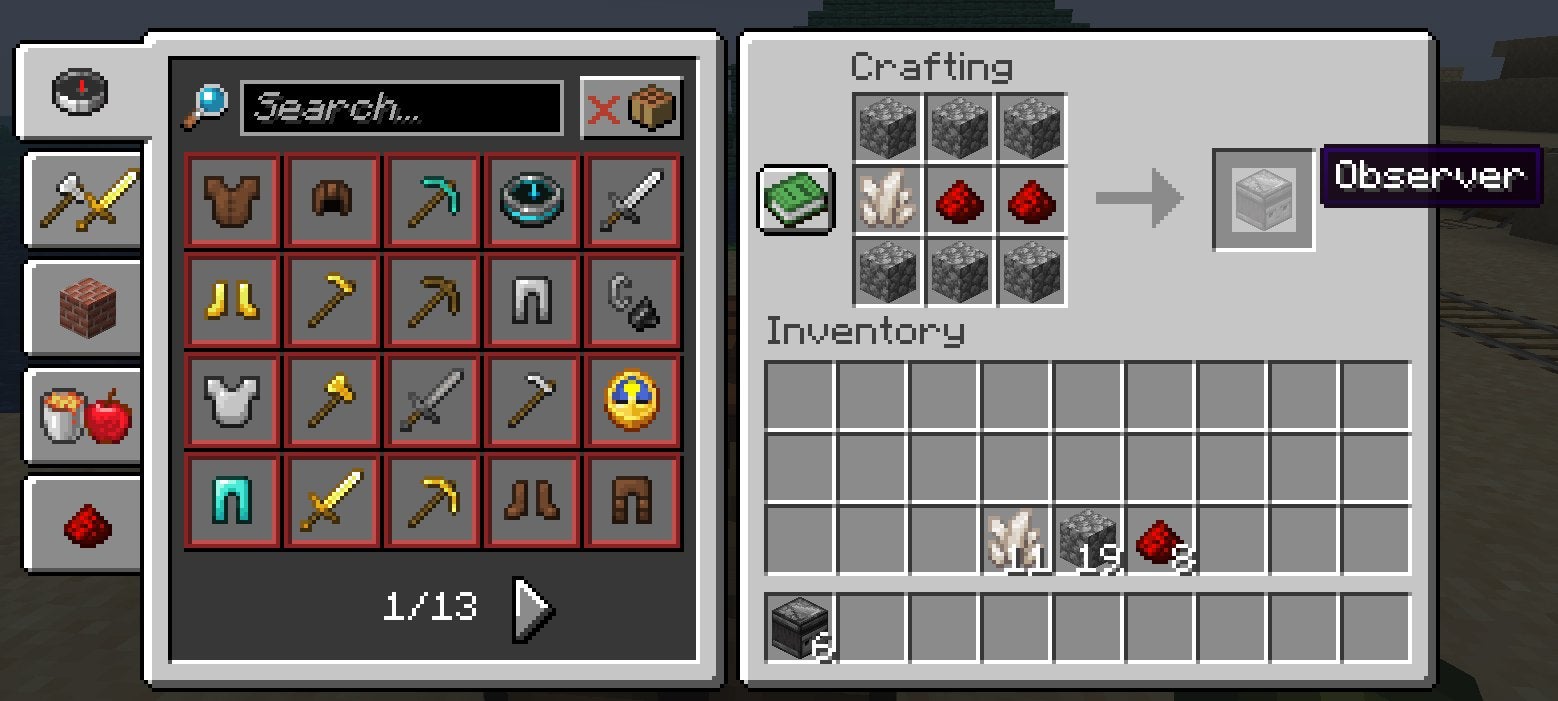
How to Get Nether Quartz
Cobblestone is very easy to get, and Redstone Dust is obtained without much trouble through mining deep underground, but Nether Quartz is trickier to come across. To find Nether Quartz, you’ll need to head to the Nether, as that’s the only place this white mineral spawns. You probably could have guessed that, right?
Thankfully, Nether Quartz Ore is pretty common in the Nether. It can spawn in any Nether biome—which the game tries to do roughly 16 times per chunk. When a blob of Nether Quartz Ore successfully spawns, it can range in size from 1 to 24 blocks. Furthermore, such ore blobs can be spotted anywhere between levels 10 and 117.
To harvest Nether Quartz from its ore counterpart, all you need is a Pickaxe (any type will do). There’s no smelting required either; every block of Nether Quartz Ore drops one ready-to-use piece of Nether Quartz.
How to Use an Observer in Minecraft
There are many ways in which you can use Observers in Minecraft, as they both track changes in their surroundings and produce a short burst of power (a Redstone Pulse). Before getting into the finer details, you need to get oriented on the orientation of Observers!
Observer Orientation and Placement
There are two sides of an Observer that you should pay attention to the most: the front and the back. The front of an Observer is the side that looks like it has two small black eyes and a serious little mouth. The front looks like a face, which is easy to remember! As for the back—it’s the side with the centralized red pixels.
When you place an Observer, it’ll always be facing away from you; you’ll see its back when you place it. Keep this in mind when placing your Observers so that you always have them pointing where you want. On top of that, you can place Observers pointing in any direction, including up and down.
What Kind of Changes Can Observers Track?
There’s some difference between how Observers work in the Java Edition versus in the Bedrock Edition of Minecraft. However, as a general rule of thumb, an Observer can take note of almost anything that happens directly in front of it.
The most common use for such tracking would be in testing Redstone machines and using other powered blocks. For instance, if a Dispenser is activated and outputs an item, an Observer that has its front side pressed against this Dispenser will emit a short Redstone Pulse.
With that said, natural state changes, such as crops growing to their next stage, also trigger Observers. Trapdoors opening, Villagers getting out of bed, the oxidization state of Copper blocks increasing—all these and more can be tracked by an Observer.
How Observers Work in Minecraft—Simplified
Whenever an Observer notices a change in the block (or fluid) directly in front of it, the little red light on the Observer’s back lights up for a fraction of a second. The light on an Observer only lights up when a change is happening; it won’t stay on indefinitely.
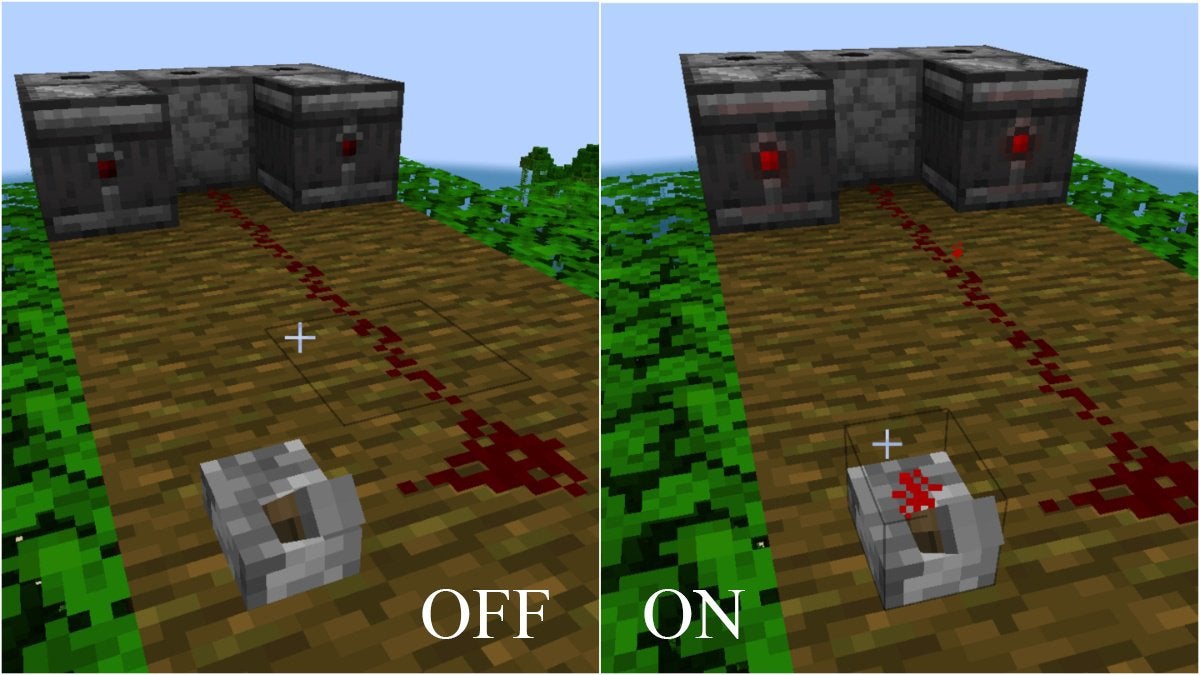
During the brief moments when its light is on, an Observer creates a Redstone Pulse that temporarily powers anything touching its back side. For example, you can use this power to quickly turn a Redstone Lamp on and then off. Doing so can be a great way to make an Observer’s activation more visually noticeable.
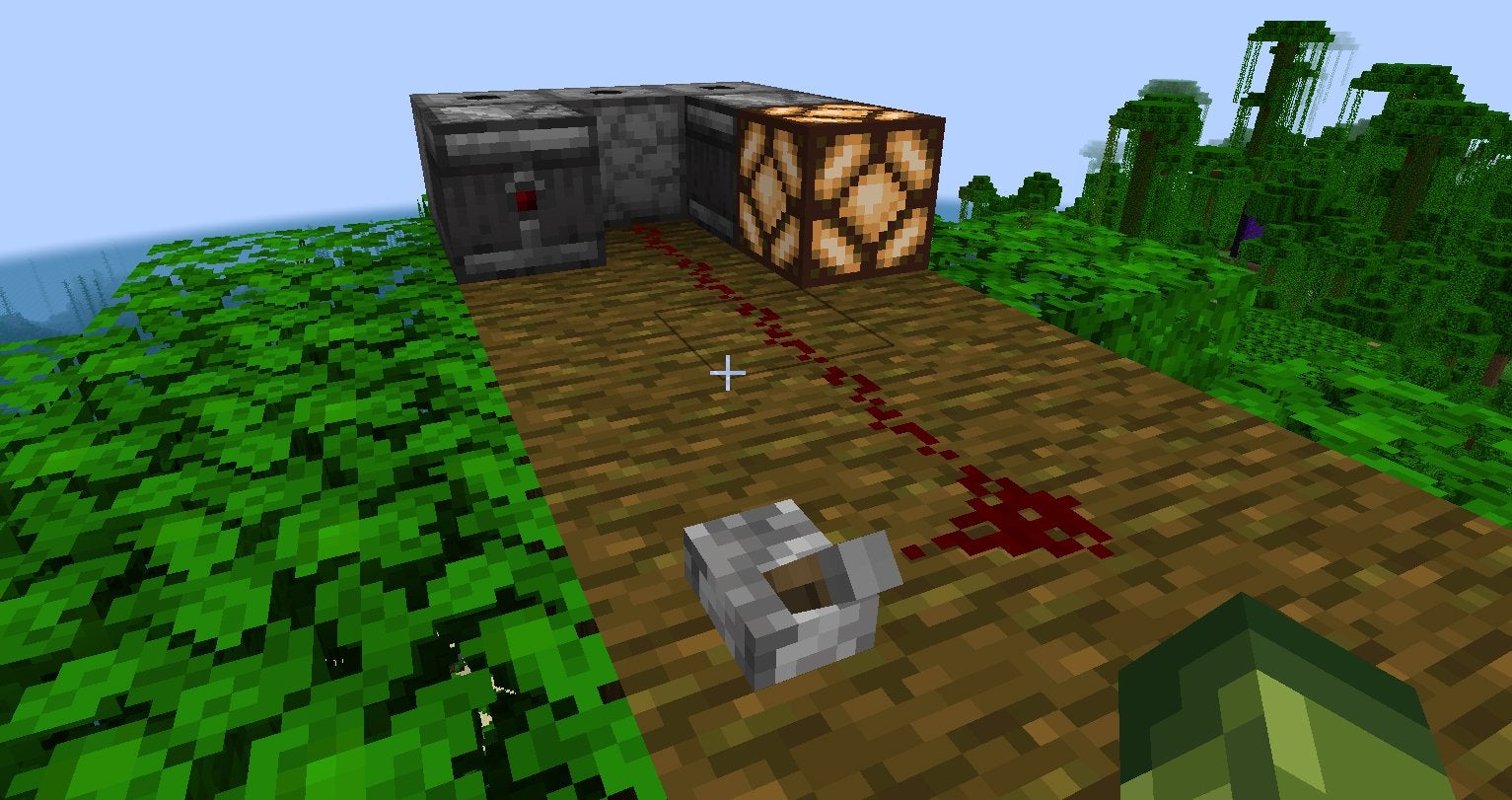
Interestingly, observing for changes counts as a state change (at least in the Java Edition). As such, two Observers placed so that they are touching and facing each other create a constant power output. You can use this in place of other power sources—such as using Levers—to send a Redstone signal to whatever machine you make.
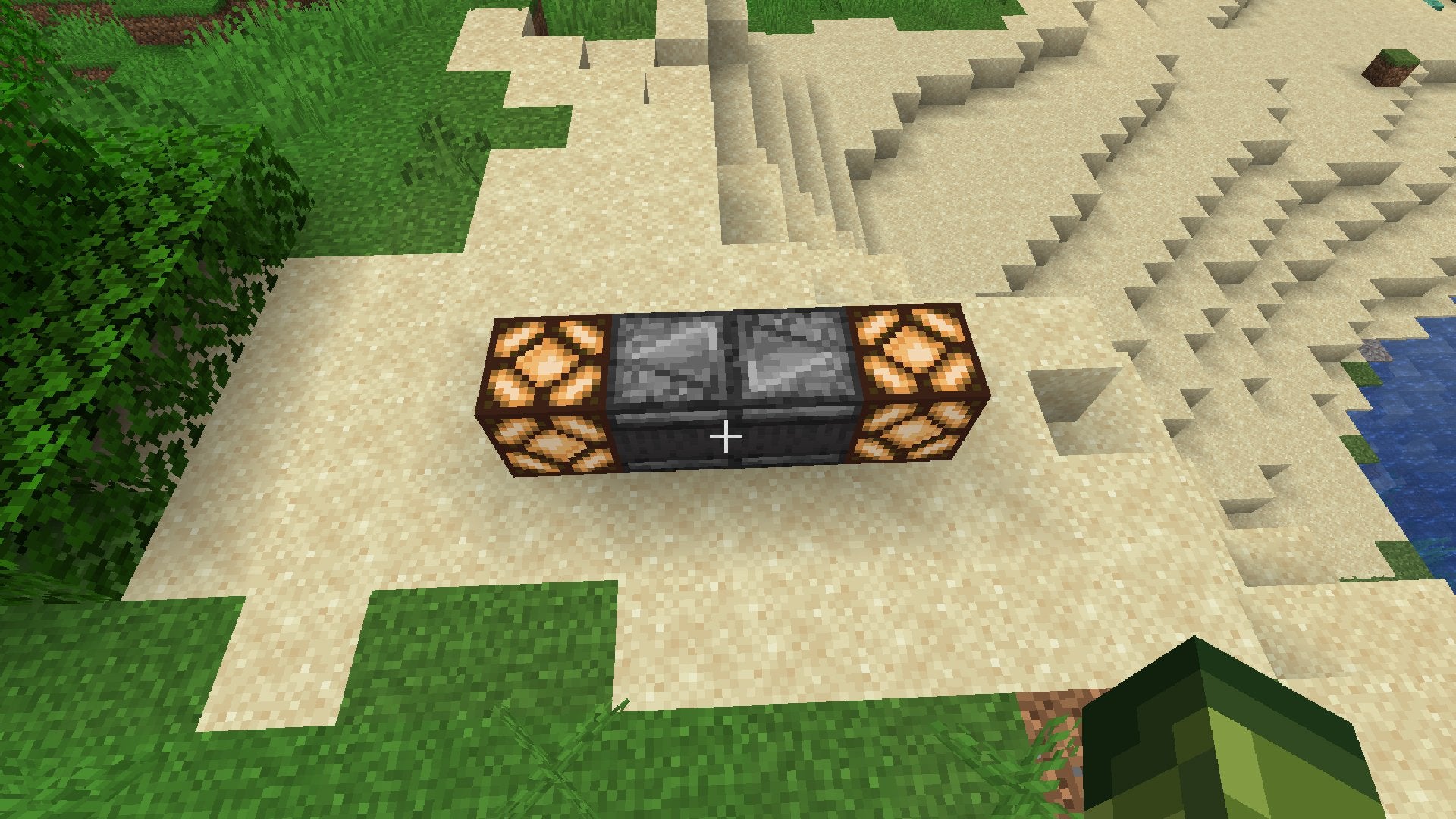
As usual in Minecraft, the sky’s the limit when it comes to a powered block’s potential! There are tons of cool tricks you can use Observers for when crafting your next contraption, such as when making a working TV or adding a secret door to your base.


